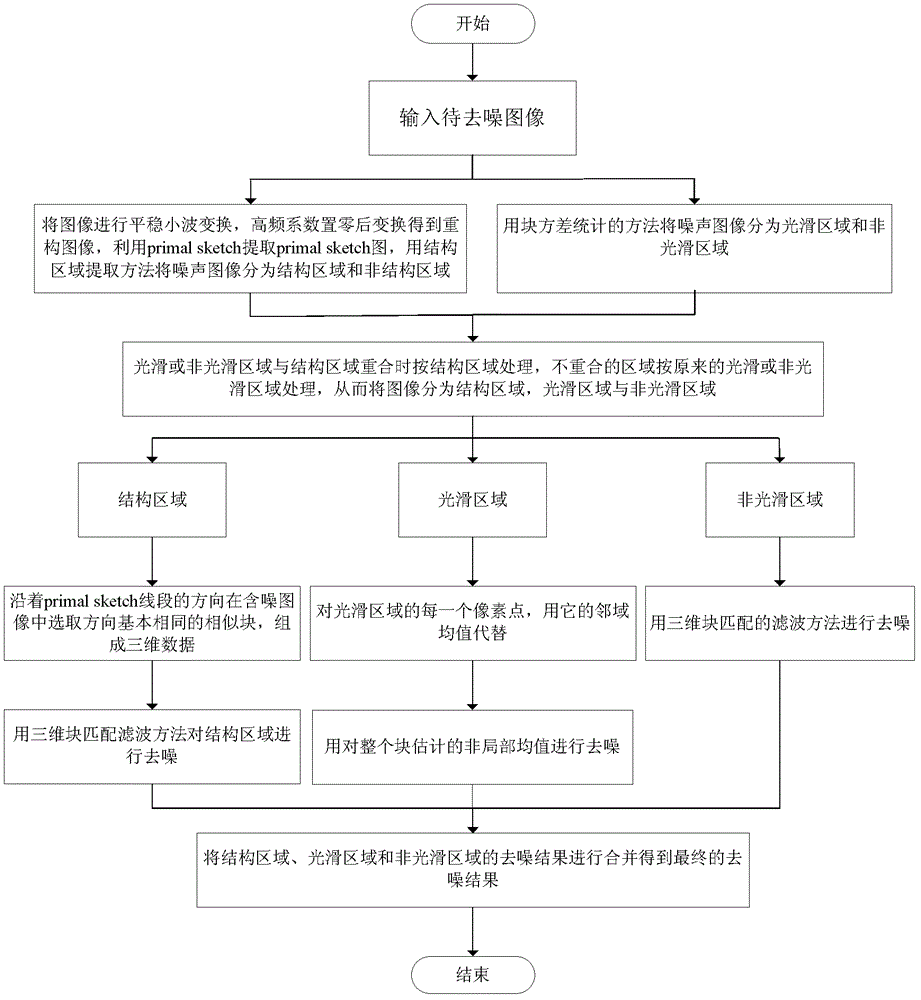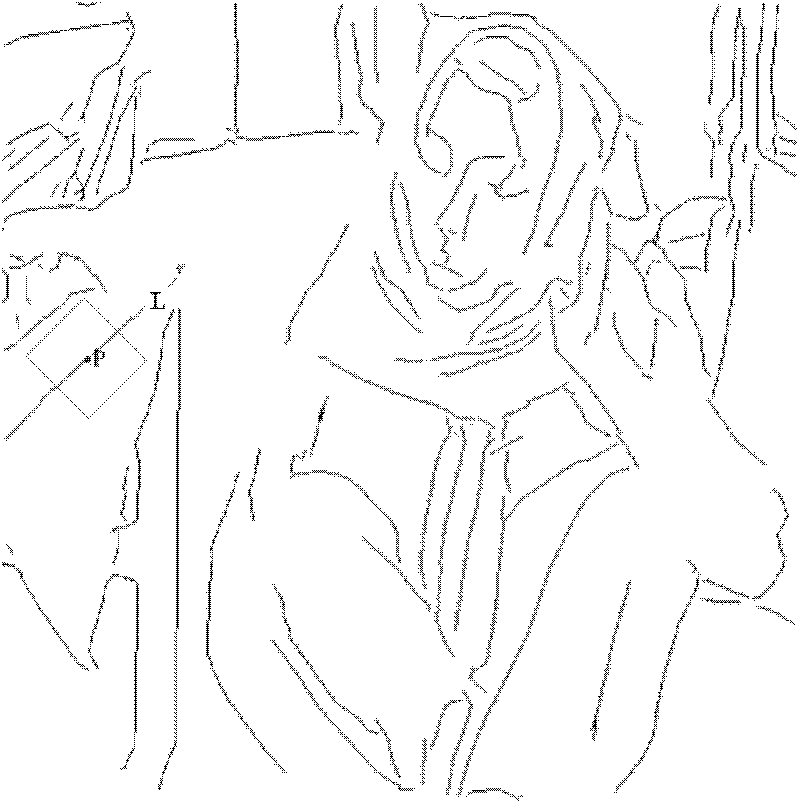Natural image denoising method based on regional division
An area division and image technology, applied in the field of image processing, can solve the problems of unclear image and high signal-to-noise ratio in the block, achieve the effect of clear edges and textures, and improve the degree of edge retention
- Summary
- Abstract
- Description
- Claims
- Application Information
AI Technical Summary
Problems solved by technology
Method used
Image
Examples
Embodiment Construction
[0029] refer to figure 1 , the specific implementation steps of the present invention are as follows:
[0030] Step 1: Input the test image and add Gaussian white noise with a standard deviation of 30 to obtain a noise image.
[0031] Step 2, the noisy image is divided into structural and non-structural regions.
[0032] (2a) Perform two-dimensional stationary wavelet transform on the noise image to obtain one low-frequency subband and three high-frequency subbands, set all the high-frequency sub-band coefficients to zero, and keep the low-frequency coefficients unchanged, and then set the high-frequency coefficients to zero The low-frequency coefficients are subjected to inverse two-dimensional stationary wavelet transform to obtain the reconstructed image;
[0033] (2b) Use primal sketch to extract the primal sketch image for the reconstructed image, such as figure 2 as shown, figure 2 The structural information of the edge of the noise image is reflected in the noise ...
PUM
 Login to View More
Login to View More Abstract
Description
Claims
Application Information
 Login to View More
Login to View More - R&D
- Intellectual Property
- Life Sciences
- Materials
- Tech Scout
- Unparalleled Data Quality
- Higher Quality Content
- 60% Fewer Hallucinations
Browse by: Latest US Patents, China's latest patents, Technical Efficacy Thesaurus, Application Domain, Technology Topic, Popular Technical Reports.
© 2025 PatSnap. All rights reserved.Legal|Privacy policy|Modern Slavery Act Transparency Statement|Sitemap|About US| Contact US: help@patsnap.com



